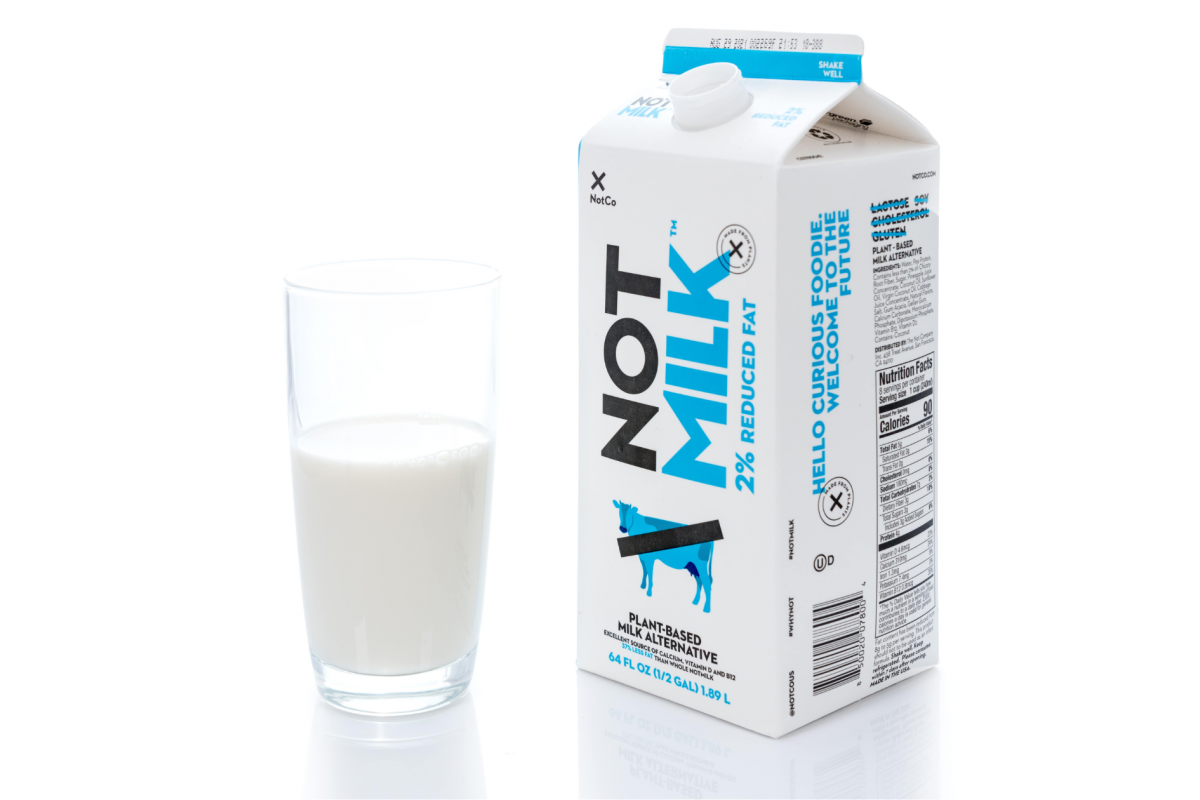
The Dairy Industry’s Fight Against Plant-Based
Since the explosion of non-dairy milk, definitions of milk have been in flux and highly debated. The dairy industry has seen a decrease in cow milk consumption for decades, and Big Dairy blames the rise of plant-based products for this trend. But plant-based milks alone do not explain dairy’s decline. Nevertheless, lobbyists and dairy farmers across the world have honed in on verbiage as a central place of combat. They take specific issue with plant-based dairy analogues referring to themselves as milks.
Historically, milk is the white liquid produced by mammals to nourish their young. But it has also become common vernacular to describe the white liquid produced as milk from vegetable sources such as oats or soybeans. In 2017, pressure from the dairy industry caused the European Court of Justice (ECJ) to hold that the term “milk” and other milk product names cannot be used to describe or market plant-based products. In a 2019 letter to the US Food and Drug Administration (FDA), The National Federation of Milk Producers argued that “almond milk” was misleading consumers, and in turn “causing harm to our nation’s children and, potentially, other consumers.” In April, FDA Commissioner Robert Califf publicly agreed and said (of banning plant-based milk alternatives from using the word milk), “We’re moving along quickly and it’s a priority to get this done, so I can assure you it will get done.”
Hence, the advent of products such as almond or coconut “beverage.” US grocery store Trader Joe’s circumvented this issue from the beginning, opting to call its oat-derived milk an “oat beverage” since it first came to market. For other key players in plant-based milk alternatives–grocers and brands alike–a wave of rebranding might soon be in store.
Not a Primary Driver
Before plant-based milks entered the scene, dairy farmers were already experiencing decreased sales in fluid milk. Since the latter part of the 20th century, the USDA has recorded a decline in per capita consumption of milk, from roughly 1 cup to 0.6 cups per day. The steepest downward trend occurred between 2010 and 2019 when consumption fell at a rate of 20.7%. According to the UK Department for Environment, Food & Rural Affairs Family Food Survey, per capita consumption in the UK has also dropped by just under 50% since 1974. Rather than something to drink as a standalone, milk has increasingly become a grocery product purchased expressly for one’s morning cup of caffeine, or perhaps to be added over cereal or in a recipe for pancakes.
USDA researchers published a 2020 study noting that the “increase in sales over 2013 to 2017 of plant-based options is one-fifth the size of the decrease in Americans’ purchases of cow’s milk.” In other words, the rise of plant-based products is not a primary driver of the decline in dairy milk consumption. Plant-based milk is merely a piece in the dairy milk consumption puzzle. What more accurately explains the decline? For starters, people’s dietary preferences have changed, heeding debate about dairy’s health benefits, as well as years of bad policy, subsidies, and overproduction. And yet, the dairy industry has focused its efforts on blaming plant-based milk.
Nutritional Breakdown
The same Federation of Milk Producers pushing the FDA on milk terminology legislation specifically argues that using the term milk on plant-based milk labels will create a “nutritional crisis.” Is there any credence to that? Well, dairy milk has eight grams of protein per glass, compared to almond milk’s one gram, oat milk’s 4 grams, and coconut milk’s 0.3 grams. That being said, soy milk packs a punch of protein on par with dairy milk’s 8 grams. Protein aside, some cite calcium and vitamin D as benefits to cow’s milk. However, most plant-based milks are fortified with calcium and vitamin D at comparable if not higher levels found naturally in cow’s milk. Meanwhile, as reported by the Harvard T.H. Chan School of Public Health, it remains unclear whether or not calcium actually prevents bone weakening or osteoporosis. For those watching their carbohydrate intake, oat milk and rice milk rank at 24g and 23g respectively, higher than cow milk’s 13g.
All in all, there are notable differences between dairy milk and plant-based alternatives, though nothing that would trigger a “nutritional crisis” for someone who consumes a generally balanced diet and can read nutrition labels. That being said, for a population convinced by marketing that children need milk as an essential part of their growth and health, it might seem like a crisis in spite of the fact that such claims have been disproven.
A Global Industry
Because dairy is a global industry, it does not do the conversation justice to focus on any one country. The global supply and demand chain has witnessed milk supplies tightening since the end of 2021 as prices for manufactured dairy have surged higher. The latest USDA World Markets and Trade report notes that among the major dairy exporting countries through May 2022, “only Argentina has seen milk output grow year-over-year (+1 percent) while Australia (-6 percent), the European Union (-1 percent), New Zealand (-6 percent), and United States (-1 percent) have all seen supplies come under pressure.” Dwindling supply combined with declining consumption is a recipe for economic turmoil for Big Dairy. The global dairy industry is scrambling to maintain its grip on the market for dairy milk products by way of the aforementioned legislation and lobbying against the term milk.
A Waste of Time
Plant-based demand is skyrocketing. Specifically, Facts and Factors predicts that the global market for plant-based milk alternatives is projected to grow above a compound annual growth rate (CAGR) of around 10.5% between 2022 and 2028. But the debate over verbiage begs an important question: does anyone actually believe that oat milk comes from cows? Indiana state Rep. Justin Moed contends that “Most consumers are intelligent enough to know it’s coming from plants, not a cow.” He went on, “Is peanut butter coming from a cow? Valvoline could be mad [that] olive oil is called oil. Who’s to say what oil is? I don’t know where this ends.” Danielle Nierenberg of the non-profit Food Tank adds, “The push to make sure oat milk and almond milk are called ‘beverages’ instead of ‘milk’ is a waste of time and resources and is a distraction from the real matters our policymakers and institutions like [the] FDA should be addressing.”
Alternatives to Big Dairy
Dairy sales are down, period, regardless of and preceding the exponential growth in plant-based alternatives. Rather than fight the plant-based industry, the dairy industry could perhaps better direct their efforts at innovating a new niche for dairy milk products. On average, people are not drinking as much milk as they once did, but there is still a strong market for dairy milk products. A possible avenue for the industry could include fermented proteins (such as the technology perfected by Perfect Day Foods) to move towards sustainable, innovative R&D, and a focus on carbon emissions reduction. Though less “Big,” this could be a way for the dairy industry to meet the needs of consumers while ensuring long-term viability.


